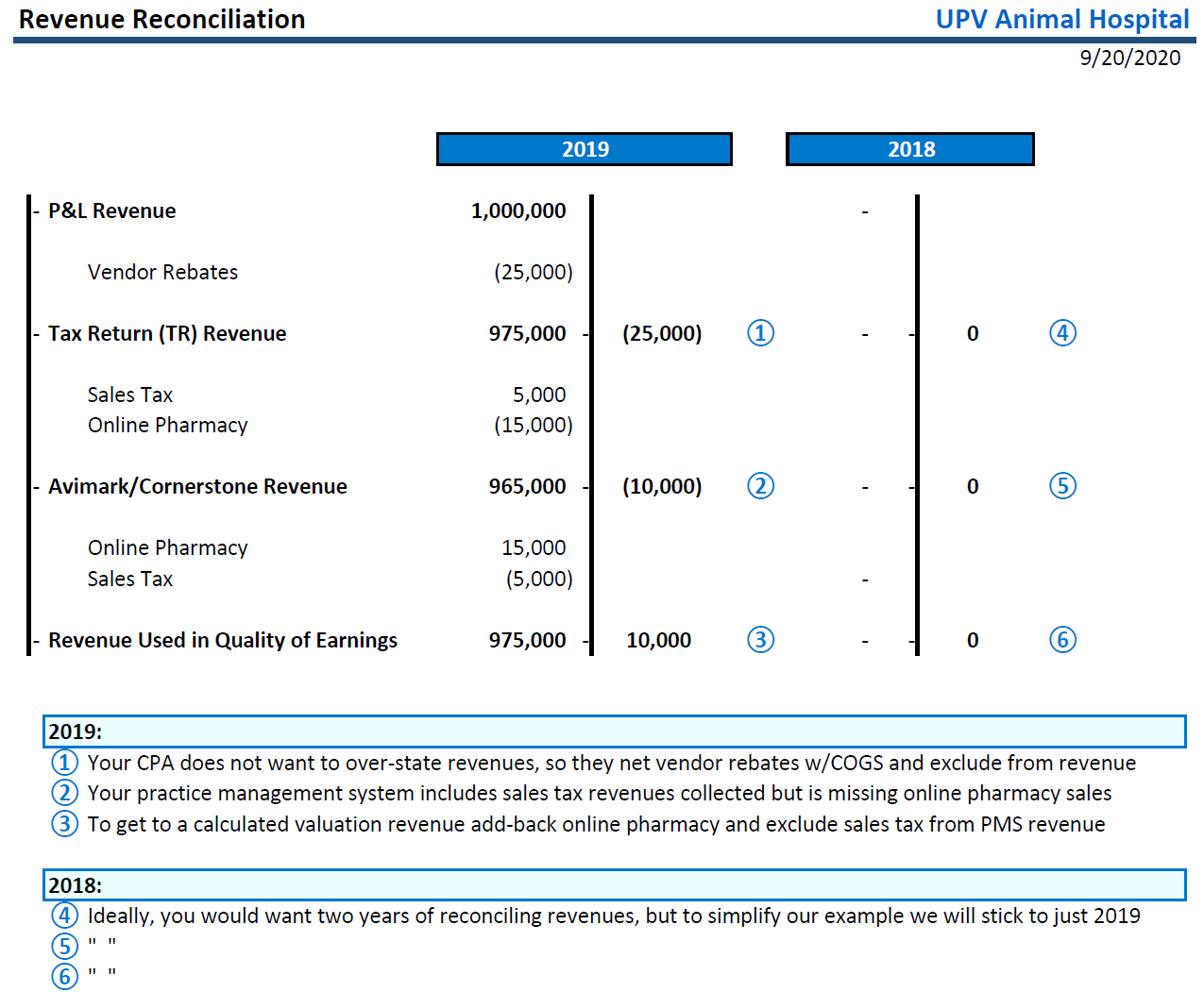
Part 1 of Valuation Basics – Revenue
When I started at NVA in 2012, I heard that veterinary hospital owners would sell their practice, based on a revenue multiple. For example, if the annual revenue was $1M, then a 1x multiple would be used to derive a sales price of $1M. There is something nice about this simple clean approach, unfortunately corporate consolidator do not uses revenue multiples to value a practice.
This is not to say that revenue is any less important today. On the contrary, revenue is still one of the most important determining factors in a hospital’s valuation. Valuation specialists working for corporate consolidators will scrutinize the revenue to determine the hospitals “true” revenues.
Why do I qualify true with quotation marks? This is because hospital A with stated revenues of $1M includes $25K of vendor rebate and hospital B with stated revenues of $1M includes $10K of interest income. In this example, neither hospital is truly a $1M hospital.
Things usually gets more confusing. When you examine either hospital a little closer, you will find that the P&L does not match the Tax Return nor the hospital’s practice management system (PMS) reports (Avimark, Cornerstone, Impromed, etc). Take it from me, as someone who has reconciled or reviewed well over a thousand hospital revenues, all three will rarely match.
I hope the illustration below helps with the explanation…

I am over simplifying the process but once an explanation is determined through the revenue reconciliation, you can move to the next step in the valuation process.
Please stay tuned for Part 2 in this series where we will discuss COGS (Cost of Goods Sold).
At the conclusion of this series, you should have a better understanding of a typical valuation methodology that is used by corporate consolidators.
